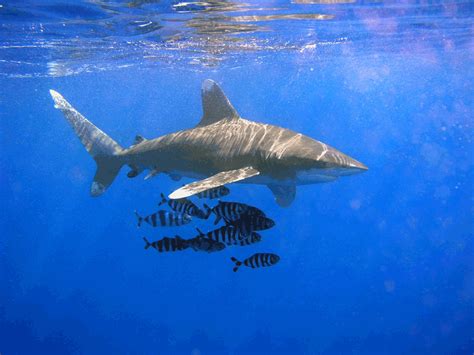-
Table of Contents
Oceanic Whitetip Shark Attack: Understanding the Risks
Sharks have long been a source of fascination and fear for humans. Among the many species of sharks, the oceanic whitetip shark stands out for its distinctive appearance and behavior. Known for its wide, rounded fins and white-tipped dorsal fin, this species is found in tropical and subtropical waters around the world. While encounters with oceanic whitetip sharks are relatively rare, understanding the risks associated with these predators is crucial for anyone venturing into their territory.
Characteristics of the Oceanic Whitetip Shark
The oceanic whitetip shark (Carcharhinus longimanus) is a large, pelagic shark known for its aggressive feeding behavior. These sharks are typically solitary hunters, preying on a variety of marine animals including tuna, squid, and even seabirds. Their distinctive white-tipped dorsal fin and long, wing-like pectoral fins make them easily recognizable in the water.
- Size: Adult oceanic whitetip sharks can grow up to 4 meters (13 feet) in length.
- Habitat: They are commonly found in open ocean environments, particularly in warm waters.
- Behavior: Oceanic whitetip sharks are known for their bold and aggressive feeding habits, often scavenging for food near fishing vessels.
Understanding Shark Attacks
Shark attacks on humans are rare, and the likelihood of encountering an oceanic whitetip shark in the wild is low. However, it is important to understand the factors that may increase the risk of a shark attack:
- Provocation: Sharks may be more likely to attack if they feel threatened or provoked.
- Feeding Behavior: Sharks may mistake humans for prey during feeding frenzies or when visibility is poor.
- Environmental Factors: Certain environmental conditions, such as murky water or low light, can increase the likelihood of a shark attack.
Case Studies and Statistics
While shark attacks are rare, there have been documented cases of oceanic whitetip shark attacks on humans. In one notable incident, the USS Indianapolis sinking in 1945 resulted in numerous shark attacks on survivors stranded at sea. While the exact number of shark-related deaths is unknown, it is estimated that hundreds of sailors were killed by oceanic whitetip sharks during the ordeal.
According to the International Shark Attack File, there have been a total of 11 unprovoked shark attacks by oceanic whitetip sharks on humans between 1580 and 2019. While the number of attacks is relatively low compared to other shark species, it is important to remain vigilant when swimming or diving in shark-infested waters.
Preventing Shark Attacks
While the risk of a shark attack is low, there are several precautions that can be taken to reduce the likelihood of an encounter:
- Avoid swimming or diving alone in remote areas where sharks are known to frequent.
- Avoid wearing shiny jewelry or brightly colored clothing that may attract sharks.
- Stay informed about local shark activity and adhere to any warnings or advisories issued by authorities.
Conclusion
Encounters with oceanic whitetip sharks are rare, but it is important to understand the risks associated with these predators. By staying informed about shark behavior and taking precautions when swimming or diving in shark-infested waters, individuals can reduce the likelihood of a shark attack. Remember, sharks Play a vital role in maintaining the health of marine ecosystems, and it is our responsibility to coexist with these magnificent creatures in their natural habitat.



